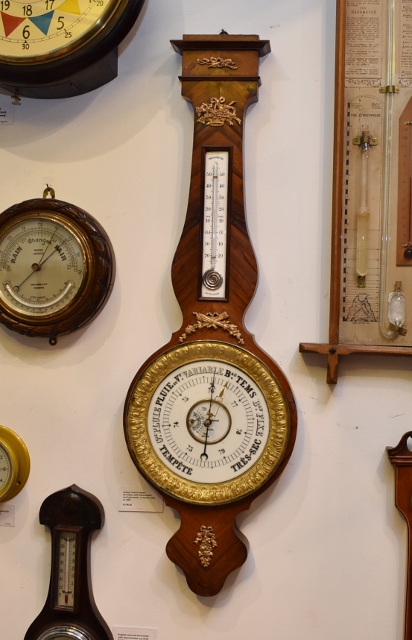For those with a deep-seated appreciation for antiques that combine functionality and a piece of history, the charm of banjo barometers is difficult to resist. These unique instruments, part artwork and part testament to historical craftsmanship, hold a particular fascination among lovers of antique clocks and barometers. This article aims to delve into the various styles of these captivating devices, shedding light on their captivating narratives and stunning features. So let’s embark on this journey of exploration together, unlocking the fascinating world of banjo barometers.
The banjo barometer, also known as a wheel or stick barometer, is an instrument for measuring atmospheric pressure. This tool’s history dates back to the late 17th and early 18th centuries, originating in England and Italy. The name ‘banjo’ barometer comes from its distinctive shape – resembling a banjo – with a round dial at the top and a long, slender neck. Although these barometers were designed for functionality, their aesthetic charm cannot be denied. Crafted with exquisite detail, they are truly a delight to any antique lover’s eyes.
Over time, artisans have developed different styles of banjo barometers, reflecting changes in design preferences and technological advances. Here are some of the most noteworthy styles:

Georgian Style Banjo Barometers
One of the earliest styles, Georgian banjo barometers are known for their elegance and simplicity. Made primarily from mahogany or oak, they typically feature a silvered brass scale and a simple mercury thermometer. Often adorned with inlays of satinwood or ebony, these barometers are a testament to the refined tastes of the Georgian era.
Victorian Style Banjo Barometers
Victorian banjo barometers are much more ornate compared to their Georgian counterparts. This era saw a growing interest in ornamental design, and as such, these barometers often have detailed carving, veneering, and mother-of-pearl inlay. Their thermometers were also more complex, with many Victorian banjo barometers featuring alcohol thermometers instead of the traditional mercury versions.
Edwardian Style Banjo Barometers
Edwardian banjo barometers marked a return to simplicity but with an added sophistication. Craftsmen used more exotic woods like walnut and rosewood, often inlaid with intricate marquetry. The Edwardian style also saw a transition to aneroid mechanisms from the traditional mercury barometers.
Collecting banjo barometers can be an incredibly rewarding hobby. Not only do they bring a sense of historical charm and sophistication to any interior, but they also offer a tangible connection to the past. Each style reflects its era’s values, tastes, and technological advancements, providing a fascinating glimpse into our cultural history.
Whether you are a seasoned collector or a novice enthusiast, we invite you to explore the world of these antique treasures with us. Unravel their stories, appreciate their craft, and let these marvelous instruments take you on a historical journey.
